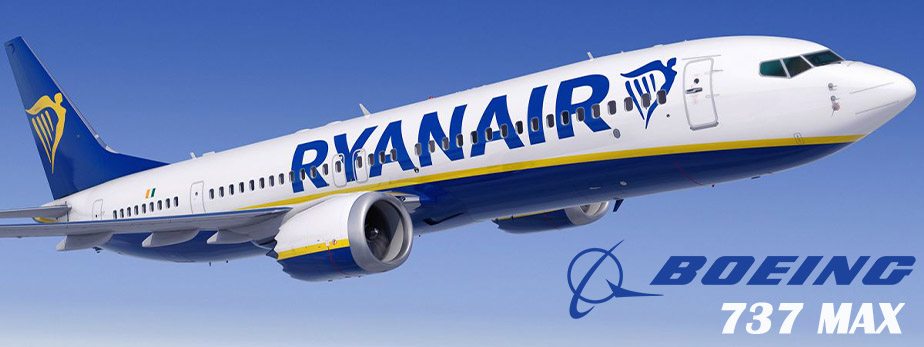Boeing to Cut Scope And Duration of Tests For New Jetliners
Engineers working at aviation giant Boeing are reducing the duration and scope of several costly physical tests that are used to certify the company’s new aircraft, Reuters reports, citing regulatory officials and industry sources.
However, it’s hard to explain the timing of such a move, especially when US lawmakers and regulators might require even more severe safety tests considering the last two deadly crashes involving the 737 Max planes.
More Computer Simulations Instead of Physical Tests
Boeing is starting the 12-month flight testing procedure for its new 777X plane. The company’s engineers will reduce hours off airborne testing by switching to computer-based simulations, after which the results will be showed to the US Federal Aviation Administration (FAA) as material for certification, two people familiar with the strategy said.
As of today, it is not clear when the planemaker decided to adopt the plan to cut the physical tests or what is the extent to which it intends to reduce them for the new 777X jet.
Boeing will stick to this strategy for its other upcoming jetliner, known as NMA. The company’s Test & Evaluation unit is currently working on the technology to replace the expensive and demanding physical safety tests that have been used for decades. During the physical tests, pilots have been shaking fuselage until cracking and using machines to bend the wings to extreme angles. From now on, most of these processes will be carried out with computer modelling, three people familiar with the matter, including an FAA representative, said.
At the moment, computer modelling tests with the NMA are in the trial phase, but the company is keen to expand “certification by analysis” to cut development costs.
Paul Bergman, a spokesperson for Boeing, declined to comment on the testing strategy for the NMA or the 777X. However, he said that the company was “looking holistically at our design and certification processes” after the 737 MAX crashes in Indonesia and Ethiopia.
He added:
This includes participating in ongoing independent government reviews and establishing a new board committee to review our end-to-end design and certification processes.
Reuters asked the FAA if it would permit Boeing to give up a range of physical tests for 777X and NMA. Spokesman Lynn Lunsford stated that the agency was making determinations on a case-by-case basis.
Boeing Focused on Profits Rather Than Safety
Last month, former Boeing engineers slammed the company’s management, revealing that the US-based aviation giant had insisted too much on spending less rather than manufacturing better systems and training pilots.
Ex-Boeing engineers Rick Ludtke and Adam Dickson told Bloomberg that the recent two crashes of the 737 Max planes were only the tip of the iceberg. The bigger picture shows that, at least for the last few years, the company has been more interested in the annual performance figures even at the expense of the safety of its aircraft.
Rick Ludtke unveiled that the company wasn’t keen to ensure Level D training for pilots switching from 737-800 planes to the new 737 Max.
He recalled that engineers invited officials from the FAA on several occasions to check their designs in one of Boeing’s simulators in Seattle. One of the plans was to impress the FAA officials and make them close their eyes to the necessity of an eventual Level D training for pilots embarking on the new planes.
In the end, the company achieved its goal, and pilots were required to complete the Level B training only. The latter could be accomplished in up to two hours on an iPad. This allowed Boeing to launch the $120 million jet much sooner.
The recent 737 Max crashes – an Ethiopian Airlines flight from March and a Lion Air flight from October last year – might have been caused by an erroneous activation of a software system called the Maneuvering Characteristics Augmentation System (MCAS). The company could potentially avoid those accidents if it had paid more attention to simulator training. Ludtke said:
“They could have done better and should have done better, but better wasn’t an option.”Boeing’s exaggerated aspiration for better profit figures had become visible since 2015 when Dennis Muilenburg became the new CEO. That was a turning point, with the aviation giant starting to demand price reductions from suppliers, push for more cost demands on engineers, and cut jobs by about 7%. All of these changes came amid increased volumes in jet manufacturing.
CEO Admits Mistake
Speaking at the Paris Airshow on Sunday, CEO Dennis Muilenburg admitted that Boeing had made a mistake in managing a problematic cockpit warning system in its 737 Max planes before two fatal crashes that together killed 346 people. He stated that the company came at the show:
With a tone of humility and learning. We clearly had a mistake in the implementation of the alert.
Muilenburg added:
When I make comments about the previous MCAS design and how we followed those processes, that's something we put a lot of thought and depth of analysis into. That doesn't mean that it can't be improved.
On Monday, Boeing stock price, traded on the New York Stock Exchange, added 2.22% at the close

Anatol has been writing for our news site for a year and is the newest member of our team. While he’s new to us, he’s certainly not new to trading with over 10 years’ experience being a professional financial journalist and working in the markets.

 News Home
News Home
 Privacy Policy
Privacy Policy
 About Us
About Us








